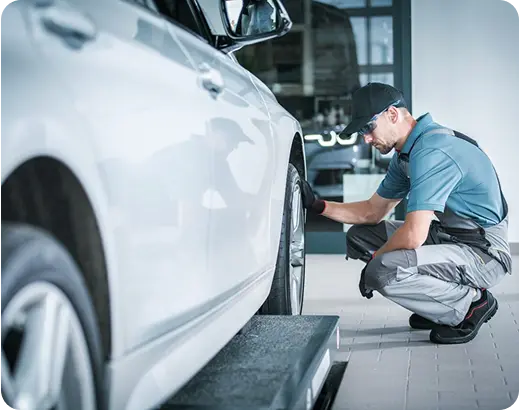
Only in America can you celebrate independence from the British by driving around in a Japanese roadster hunting displays of fireworks manufactured in Hong Kong.
When last we slipped behind the wheel of a Mazda Miata, the car had barely reached market. It was in short supply, a vehicle brought out to determine whether those who once loved British roadsters would rekindle the affair in a car that looked British but carried a made-in-Japan label.
Mazda found that Miata was a huge success when it was introduced in spring of 1989 as a 1990 model. Not only did consumers want to get their hands on one, some were willing to pay $5,000 more than sticker price to obtain one of only about 20,000 made the first year-and only with five-speed manual transmissions.
The little sports car-and we emphasize little, considering the 89-inch wheelbase and 155-inch overall length-proved that people wanted a cute drop- top two-seater, even if it had more mystique than muscle.
In the `89 calendar year Mazda sold 23,052 Miatas. Sales grew to 35,944 in 1990 and eased a bit, to 31,240, in 1991. Despite the decline, Miata ranked as the No. 1-selling convertible in the industry in 1991.
For 1992 Mazda made scant changes other than adding all-black and all- yellow versions. It plans to build 1,500 yellow Miatas and 7,500 black ones.
We tested the black Miata, which Mazda calls Brilliant Black (it`s Sunburst Yellow, by the way). “Brilliant“ it is. You need to put on shades about three blocks away because the body panels shine so much. Keep in mind that black, when clean, is one of the richest car colors, but when airborne scum lands on the finish, nothing looks more ragged.
In other words, don`t opt for Brilliant Black if all the care you give the car each week is to fill it with gas.
One other word of warning about a Brilliant Black Miata. It only comes with tan seats and trim. Some love the combination. Others may find it takes time to get used to. Others would simply take a pass because they know any all-black car really should have an all-mauve interior.
Miata is powered by a 1.6-liter, 116-horsepower, 16-valve engine. That`s 116 horsepower at 6,500 r.p.m., meaning you get lots of exhaust noise off the light but not a lot of kick until well after you`re up to cruising speed. The 25 m.p.g. city/30 highway mileage with the five-speed manual, 24/28 with the four-speed automatic, serves notice that Miata isn`t meant to be raced from light to light as it is to be enjoyed simply by lowering the top and heading for a peaceful patch of countryside for leisurely driving.
You can sprinkle the highway stroll with a few quick downshifts and upshifts as you slip into and out of corners when you reach hilly or curving terrain.
Four-wheel independent suspension and rack-and-pinion steering help reduce harshness when the road no longer is flat or straight. A tw eak here and there to the rear suspension makes for noticeably better handling and response to wheel input on the rear-wheel-drive Miata for 1992.
The convertible top is one of the easiest in the industry. Snap one lever left and right and simply lift the top up and over your head into the stowage well behind the occupants. A vinyl boot is included to hide the hardware. We expected a tighter fit than the boot provided.
A driver-side air bag is standard. Such protection is a must in a tiny car like this. Unfortunately, a passenger-side bag isn`t coming until 1994.
Anti-lock brakes should be standard but are a $900 option. The price is stiff, but the protection such brakes afford is difficult to calculate from a ditch. Get the anti-lock brakes.
A few changes since Miata`s introduction find remote releases for the trunk and gas-tank door hidden in the center armrest compartment. The optional detachable hardtop sports a rear-window defroster.
The Miata, which debuted at less than $14,000, now carries a base price of $17,050. Our test car added air conditioning at $830, floor mats at $65, limited-slip differential at $250 and a $1,400 option package that includes 14-inch forged alloy wheels, wooden shift knob and hand-brake lever, stainless-steel scuff plates with the Miata logo, cruise control, power antenna and headrest speakers.
The test car didn`t have anti-lock brakes. Automatic transmission would have been a $750 option.
Miata is a gem.








